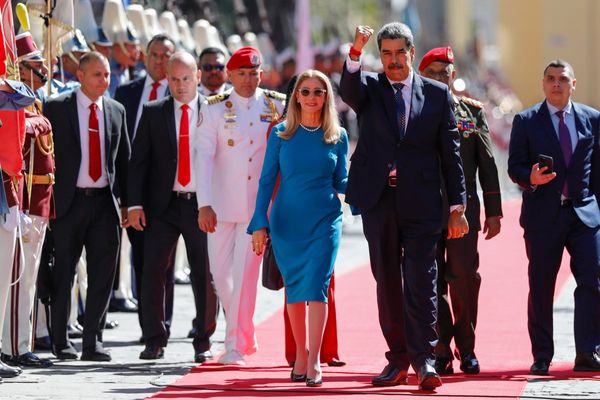
This year, leaders from the United States, Canada, and Latin America will gather for the triennial Summit of the Americas. It will be the first time the United States hosts the meeting since its launch in 1994. For U.S. President Joe Biden, who has committed his presidency to addressing climate change at home and abroad, it is the perfect moment for a new hemispheric pact, this time safeguarding the region’s battered natural environment. Former U.S. President Donald Trump skipped the last Summit of the Americas, marking the first time a U.S. president had not attended. Biden’s mere presence at the next summit will be a welcome change of pace. But the new administration should aim higher.
Latin America is one of the most naturally biodiverse regions, home to more than 30 percent of the world’s species in teeming habitats from lowland forests to the high-altitude grasslands of the Andes Mountains. The Amazon, the planet’s largest tropical rainforest, is bursting with mammals, birds, amphibians, reptiles, and a kaleidoscope of freshwater fish. But the region’s stewardship of these natural spaces has been uneven. Habitat loss from agricultural land expansion, pollution, illicit mining and logging, overfishing, and helter-skelter development have sped the rate of extinctions.
Brazil is the most notorious case. President Jair Bolsonaro’s war on trees cost 4,280 square miles of the Amazon last year, a 12-year high, while wildfires destroyed a quarter of Brazil’s sprawling Pantanal wetland, killing or injuring hundreds of jaguars. This destruction is so severe it threatens the survival of Indigenous communities. But Brazil is hardly the hemisphere’s only offender. In Argentina, wildfires in Córdoba, allegedly ignited by ranchers, burned hundreds of square miles of forest last year, a calamity the country’s own environmental minister described as “ecocide”—a term typically used for large-scale and systematic environmental destruction that advocates say should be punished under international law. Mexico’s president, Andrés Manuel López Obrador, is doubling down on oil production. In the United States, Trump adopted 74 actions during his presidential term to weaken environmental protections, undermining climate policies and stripping regulations that had protected the country’s air and water.
This recent history might suggest disinterest in environmental protection. But Brazil, Mexico, and the Trump-era United States are outliers in the hemisphere. In contrast, Costa Rica is a trailblazer in land conservation and policies for carbon neutrality. Ecuador’s constitution grants nature the right to “respect for its existence.”
Around 82 percent of citizens of Mexico, Costa Rica, El Salvador, Guatemala, Honduras, Nicaragua, and Panama see climate change as a serious threat, according to Vanderbilt University polling in 2016 and 2017. Chile was an early adopter of electric buses and now operates one of the largest fleets outside of China. Colombia has one of the most ambitious plans in the region to reduce carbon emissions by 2030.
In environmental circles, Uruguay is admired for its rapid adoption of wind and solar energy. Argentina and Chile are two of the world’s biggest suppliers of the lithium used in electric vehicles batteries, and several countries in South America are promoting “green hydrogen,” a hydrogen fuel produced using renewable energy. In February, the region’s environmental ministers issued a joint declaration agreeing Latin America’s economic recovery strategies should be “accelerating environmental and climate action” as it emerges from the pandemic’s economic wreckage.
Conservation can unify when it comes to regional diplomacy, even as ideological divisions stymie cooperation on other challenges, including refugee crises, corruption, and domestic political turmoil. In Latin America, 17 of 34 governments ratified the 1988 San Salvador Protocol, which recognizes “the right to live in a healthy environment.” Twenty four countries signed the 2018 Escazú Agreement, which mandates increased access to information on the environmental impact of development projects; it entered into force on Earth Day this year as the first treaty globally to enshrine the rights of environmental defenders. The Organization of American States’ General Assembly has adopted numerous resolutions on environmental rights, in which members have urged greater cooperation to address climate change and implement the Inter-American Program for Sustainable Development, a regional agreement to promote environmental protection.
The region is also a pioneer of environmental protection through international law. On several occasions, the Inter-American Court of Human Rights has warned governments about environmental degradation and its impact on human rights. In a landmark 2017 advisory opinion, for example, the regional court recognized a right to a healthy environment and ordered governments to conduct environmental impact studies, prevent environmental abuses, and mitigate any damage. Last year, the court concluded Argentina had violated those obligations by permitting illegal logging and cattle ranching on Indigenous lands.
Latin American governments, notably Costa Rica, have also supported global campaigns for environmental rights, including the 1992 Rio Declaration on Environment and Development, the 2015 Paris climate agreement, and a U.N. Human Rights Council expert report in 2018 that examined the right to environmental protections and the obligation of governments to prevent environmental destruction. The small islands of the Caribbean, vulnerable to sea level rise and increasingly frequent hurricanes, have been at the forefront of multilateral efforts to combat climate change. Chile, Colombia, Costa Rica, and Peru played consequential roles in the Paris Agreement negotiations, and their environment ministers are a major draw at U.N. climate talks.
A regional environmental treaty is a logical and realistic next step for Latin America. A hemispheric environmental pact that also includes the United States—comparable to the historic Inter-American Democratic Charter that then-U.S. Secretary of State Colin Powell signed two decades ago—would greatly strengthen existing environmental protections, send a strong signal of the region’s commitment to conservation, and offer novel tools for monitoring and enforcement. Seven Latin American presidents participated in Biden’s climate summit on April 22. Later this year, as host of the Summit of the Americas, Biden has a chance to build on that momentum while deepening U.S. cooperation in a region the United States largely neglected under the last administration.
To promote conservation, this charter should include a far-reaching action plan for environmental protection—on land and at sea—with progress evaluated at an annual inter-American meeting of foreign and environmental ministers. Similar to the Universal Periodic Review at the U.N. Human Rights Council, these gatherings would evaluate progress slowing deforestation and meeting other obligations under the Paris Agreement and the Convention on Biological Diversity. The United States could also use the summits to establish new regional partnerships with federal agencies, such as the National Park Service and National Oceanic and Atmospheric Administration, and pursue more ambitious ideas, such as an environmental counterpart to the Peace Corps.
The treaty would also embolden the Inter-American Commission on Human Rights and the Inter-American Court of Human Rights to defend environmental rights. Thus far, the commission and court have relied on advisory opinions or novel interpretations of existing treaties to protect the region’s environment. An environmental treaty would create legal obligations, give the hemispheric court enforcement powers, and allow individuals in the Western Hemisphere to petition national and international bodies for clean air, clean water, and healthy forests. Finally, the treaty should permit, in extreme cases, the naming and shaming of environmental scofflaws in the country-specific Chapter 4(b) section of the Inter-American Commission’s annual report.
As a bonus, this charter would distinguish the United States from China, which is infamous for its environmental misdeeds abroad, including in Latin America. Though China has supported Latin America’s renewable energy sector, most of its investments in the region, including through the Belt and Road Initiative, are concentrated in extractive industries—such as oil, gas, and mining—as well as industrial scale agriculture that contributes to deforestation. Chinese fishing fleets are notorious for abusing sensitive habitats, such as the waters around Ecuador’s Galápagos Islands.
Finally, an environmental treaty would help guide Inter-American Development Bank priorities as the regional lender helps rebuild Latin America’s faltering economies in the wake of the pandemic. That would ensure government stimulus spending prioritizes sustainable infrastructure projects, including renewable energy, instead of bailing out traditional polluting sectors, such as state-owned oil companies, while starving environmental protection agencies.
During the last four years, such a proposal would’ve sounded far-fetched. Trump paid little attention to Latin America and none to its environmental troubles. But Biden is implementing an ambitious agenda for the region, which he visited 16 times as vice president, and environmental issues are at its core. In addition to global actions, such as rejoining the Paris Agreement, he envisions a more integrated energy grid from Mexico through Central America and Colombia, as well as clean energy investments throughout the region. His climate envoy, former U.S. Secretary of State John Kerry, is furiously negotiating with Brazil to reverse deforestation. Biden has made significant promises when it comes to the climate, and to achieve his goals, he needs the cooperation of Latin American leaders.
It might be tempting to use the summit simply to retire Trump’s hostile regional platform or to resurrect the sensible but divisive hemispheric trade policies former U.S. President Bill Clinton launched at the 1994 summit in Miami. Instead, Biden should drive a bold agenda to urgently address regional climate and ecological crises while demonstrating a renewed U.S. commitment to Latin America.







